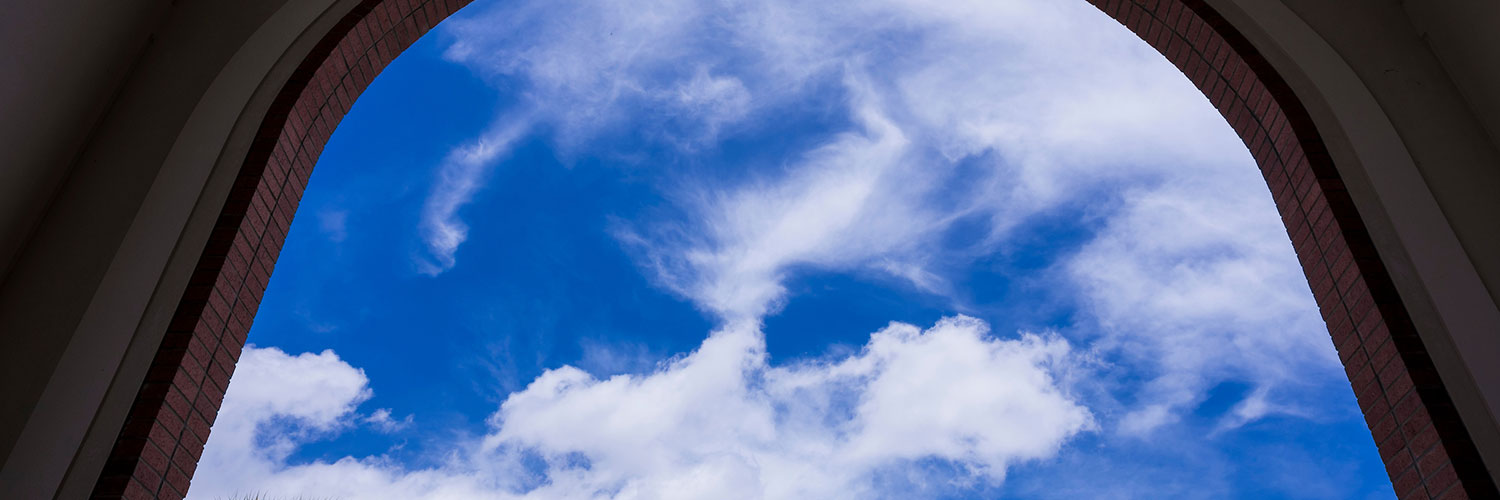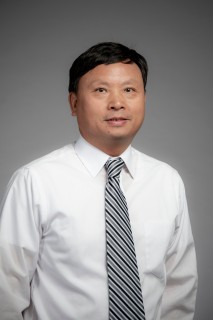
Wang, Kegang

Kegang Wang
Professor | College of Engineering and Science - Mechanical and Civil Engineering
Affiliate Faculty | College of Engineering and Science - Aerospace, Physics and Space Sciences
Contact Information
Personal Overview
2015: NASA Review Panel
2008: NSF Division of Materials Research Review Panel.
2005: Best Presentation Award for the paper "ELMS: A Long-Duration Microgravity & Materials Science Experiment for ISS," 16th Microgravity Science and Space & Processing Symposium, AIAA-2002-018.
1997: Outstanding Young Scientist in Beijing Institute of Technology (BIT).
1997-99: Fellowship of Outstanding Young Scientist in BIT.
1996-97: Fellowship of ``Promotion of Scientific Cooperation'' of Max-Planck Society.
1994-96: Postdoctoral Fellowship of Ministry of Education and Science of Spain.
1992-94: Postdoctoral Foundation of China.
Educational Background
Ph.D. Chinese Academy of Sciences, China
M.S. Sichuan University, China.
B.S. Jiangxi Institute of Education, China.
Professional Experience
2018--: Professor, Mechanical and Civil Engineering Department, Florida Institute of Technology.
2015--2018: Professor, Mechanical and Aerospace Engineering Department, Florida Institute of Technology.
2012--2015: Associate Professor, Mechanical and Aerospace Engineering Department, Florida Institute of Technology.
2006--2011: Associate Professor, Physics and Space Sceinces Department, Florida Institute of Technology.
1999.--2006: Research Assistant Professor, Department of Materials Science and Engineering, Rensselaer Polytechnic Institute, Troy, New York.
1997--2000: Associate Professor, Department of Applied Physics, Beijing Institute of Technology, Beijing, China.
1998--1999: Visiting Scientist, Tohwa University, Fukuoka, Japan.
1995--1996: Post-doctoral Associate, University of Minnesota, Minneapolis, Minnesota.
1994--1995: Post-doctoral Fellow, Department of Physics, University of Barcelona, Barcelona, Spain.
1992--1994: Post-doctoral Researcher, Department of Materials Physics,
Beijing University of Science and Technology, Beijing, China.
Selected Publications
H. Yan, K. G. Wang, M. E. Glicksman, “Microstructural coarsening in dense binary systems,” Acta Materialia, 233, 117964 (2022).
K. G. Wang, G. Q. Wang, E. Gamsjaeger, M. E. Glicksman, “A comparison of theory and simulation with microgravity experiments on phase coarsening,” Acta Materialia, 221, 117402 (2021).
J. C. Li and K. G. Wang, “Theoretical prediction for mechanical properties in nanotwinned and hierarchically nanotwinned metals with different twin orders,” Materials Today Communications, 23, 100887 (2020).
J. C. Li and K. G. Wang, “Size Effects on Mechanical Properties in High-order Hierarchically Nanotwinned Metals,” Journal of Materials Research, 34, 2117 (2019).
J. C. Li and K. G. Wang, “Influence of phase coarsening on fatigue crack growth in precipitate strengthened alloys,” Engineering Fracture Mechanics, 205, 229 (2019).
J.C. Li and KG. Wang, "Effect of phase coarsening on the mechanical properties of alloys: I. Numerical simulations,"Engineering Fracture Mechanics,https://doi.org/10.1016/j.engfracmech.2018.06.028
J.C. Li and KG. Wang, "Effect of phase coarsening on the mechanical properties of alloys: II. Mechanism analysis,"Engineering Fracture Mechanics,https://doi.org/10.1016/j.engfracmech.2018.06.026
K.G. Wang and M.E. Glicksman,"Testing Numerical Modeling of Phase Coarsening by Microgravity Experiments," JOM, Vol. 69, No. 12, 2017 DOI: 10.1007/s11837-017-2553-x.
K.G. Wang and G. Q. Wang," Phase coarsening in multicomponent systems,"PHYSICAL REVIEW E 95, 022609 (2017)
Hui Yan, K G Wang et al., "Large-scale three-dimensional phase-field simulations for phase coarsening at ultrahigh volume fraction on high-performance architectures," Modelling Simul. Mater. Sci. Eng. Vol. 24, 055016 (2016).
Yong Liu and K.G. Wang et al., "First-principles Calculations of Strengthening Compounds in Magnesium Alloy: A General Review," Journal of Materials Science & Technology, (2016), http://dx.doi.org/10.1016/j.jmst.2016.04.003.
W. C. Hu, Y. Liu, and K. G. Wang et al., “Predictions of mechanical and thermodynamic properties of Mg17Al12 from first-principles calculations,” Phil. Mag., Vol. 95, No. 15, 1626-2015 (2015).
K. G. Wang, M.E. Glicksman, “Phase Coarsening in Thin Films,” JOM, March Issue, (2015).
Kwok Sau Fa and K. G. Wang,“Integro-differential equations associated with continuous-time random walk,” International Journal of Modern Physics B, 27, 1330006 (39 pages)(2013), (Review Paper).
B. Pletcher, K. G. Wang, M.E. Glicksman, “Theoretical, Computational, and Experimental Studies of δ' Phase Coarsening in Al-Li Alloys,” Acta Materialia., Vol. 60, 5803-5817 (2012).
B. Pletcher, K. G. Wang, M.E. Glicksman, “Ostwald ripening in Al-Li alloys: test of theory,” International Journal of Materials Research, 103, 1-5 (2012). This paper makes the journal cover.
Kwok Sau Fa and K. G. Wang,“Integro-differential equation for joint probability density in phase space associated with continuous-time random walk,” Physica A, Vol. 391, 3858-3864 (2012).
K. G. Wang et al.,``Simulating Three-dimensional Phase Coarsening at Ultrahigh Volume Fractions by Phase-field Method," Solid State Phenomena, Vol. 172-174, 1112-1118 (2011).
Kwok Sau Fa and K. G. Wang,``Continuous time random walk with generic waiting time and external
force," Physical Review E, Vol. 81, 051126 (2010).
Kwok Sau Fa and K. G. Wang,``An integrodifferential diffusion equation for continuous time
random walk," Physical Review E, Vol. 81, 011126 (2010).
K. G. Wang et al.,``Phase-field Simulation of Phase Coarsening at Ultrahigh Volume Fractions," Journal of Applied Physics Vol. 107, 061801 (2010).
G. Sheng, T. Wang, Q. Du, K. G. Wang, Z. K. Liu, L. Q. Chen, ``Coarsening kinetics of a two phase mixture with highly disparate diffusion mobility," Communication in Computational Physics, Vol. 8, 249 (2010).
K. G. Wang et al.,``Simulating Phase Coarsening of Ultra-High Volume Fractions," Materials Science Forum, Vol. 638-642, 3925-3930 (2010).
A. D. Vinales, K. G. Wang, and M. A. Desposito,``Anomalous diffusive behavior of a harmonic oscillator driven by a Mittag-Leffler noise," Physical Review E, Vol. 80, 011101 (2009).
K. G. Wang, ``Unified Model Equations for Microstructure Evolution," Physica A, Vol. 387, 3084 (2008).
K. G. Wang and M. E. Glicksman, Chapter 5, ``Ostwald Ripening in Materials Processing,"
Materials Processing Handbook, edited by J. Groza et al, CRC Press (2007).
K. G. Wang, et al. ``Correlations and fluctuations in phase coarsening," Phys. Rev. E, Vol. 73, 061502 (2006).
K. G. Wang, et al. ``Length Scales in Phase Coarsening: Theory, Simulation, and Experiment," Computational Materials Science, Vol. 34, 235-253 (2005).
K. G. Wang, et al. ``Property Prediction of Materials using Microstructural Modeling," Acta Mater. Vol. 53, 3395 (2005).
K. G. Wang, et al. "Modeling and Simulation of Phase Coarsening: a Comparison with Experiment," Phys. Rev. E. Vol. 69, 061507 (2004).
K. G. Wang, et al. "Computational Model for High Speed Screening of Polymer Microstructures," Macromolecular Rapid Communications, Vol. 25, 377-381 (2004).
K. G. Wang, et al. "Locale Noise in Late-stage Coarsening," Phys. Rev. E. Vol.68, 051501 (2003)
K. G. Wang, ``Simulating Formation of Voids in Charged Colloids by Brownian Dynamics", Phys. Rev. E. Vol. 62, pp. 6937--6941(2000).
K. G. Wang, et al. ``Nonequilibrium Statistical Description of Anomalous Diffusion", Physica A Vol. 265, PP. 341-351 (1999).
K. G. Wang, ``Nonequilibrium Statistical Mechanical Formulation for Grain Growth", Z. Phys. B, Vol. 99, pp.593-597 (1996).
K. G. Wang, et al. ``Kinetics of Particle Coarsening Process ", Z. Phys. B, Vol. 94, pp.353-358 (1994).
K. G. Wang, ``Long-time Correlation Effects and Anomalous Biased Diffusion", Phys. Rev. A Vol. 45, pp.833-837 (1992).
Research
Project 1: ``Theoretical, Computational, and Experimental Study of 3D Microstructural Evolution in Ultra-high Volume Fractions Coarsening Systems," funded by NSF and DFG. The team for this project consists of Professors, postdoctors, graduate students from Florida Tech, Penn. State University, Ulm University and TU Dresden in Germany.
Project 2: ``Controlling Nanocrystal Shape to Boost Efficiency of New Solar Cells," funded by Florida Solar Energy Center.
Project 3: ''Large-scale Simulations for 3D Microstructural Evolution in Alloys," funded by NSF.
Project 4: "Statistical Mechanics of Anomalous Diffusion and Its Applications to Materials and Biological Systems."
Project 5: "Theoretical, Computational, and Experimental Study of Phase Coarsening in Alloys." funded by NASA.
Project 6: "Multiscale Modeling and Predictions of Properties of Materials."
Project 7; "Machine Learninng and it Applications in Materials Science and Engineering"
Research & Project Interests
Professor Wang's research interest covers theoretical, computational, and experimental materials science, condensed matter physics, statistical mechanics, and nanotechnology. One of goals is to understand nucleation and growth mechanisms, and evolution of microstructures and nanostructures in materials, to optimize these structures, and finally to design new structures. Another goal is to link processing and structures to various properties of materials, and to predict properties of materials by multiscale modeling. Materials include hard and soft materials such as alloys, nanocomposites, colloids, and polymers. One of his interests is on study of materials for solar cells. His interests also include statistical description of anomalous diffusion and relaxation processes in heterogeneous materials and biological systems.


 Give to Florida Tech
Give to Florida Tech